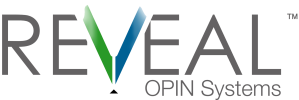5 Ways to Ensure User Adoption
For a number of years, it’s been my counterintuitive contention that folks over the age of 50 are actually MORE flexible than their millennial counterparts. Since the AARP generation has had more experience with living through the ebbs and flows of change in business, it’s likely that they will grudgingly agree to adopt tools and systems that, while kludgy and occasionally requiring workarounds, eventually accomplish the task.
 The millennial generation has grown up with choices. They can access their work from anywhere, and the proliferation of API’s allow them to use virtually any application to accomplish it. They will try almost anything, and have little loyalty to big-name brands like Microsoft or even Apple. If there is a better mousetrap, they’ll find it!
The millennial generation has grown up with choices. They can access their work from anywhere, and the proliferation of API’s allow them to use virtually any application to accomplish it. They will try almost anything, and have little loyalty to big-name brands like Microsoft or even Apple. If there is a better mousetrap, they’ll find it!
As a growing company with a younger, more technologically sophisticated workforce, we have been talking about upgrading some of our core systems. Our baby-boomer management team generally values function over form. They don’t like ugly software, but since change is painful, they’ll live with it if it works. Our younger staff generally value both function and form – wanting to accomplish their most important goals in a user-friendly customized environment made available everywhere on any device. They value simplicity and user experience more than feature-rich but complicated software.
So You Want to Ensure User Adoption?
- What are the users responsible to deliver?
- To whom is it delivered?
- How is it delivered?
- What are the security requirements?
- What are the inputs to their process?
- After you’ve asked them about their work, ask to watch them interact in the way they’ve described. It’s been my experience that people will tell you one thing, then do another. Not because they’re lying, but because they don’t actually think about how they do their work, and they often employ time-consuming workarounds they can’t even describe. Watching them work will give you a much better idea of their actual needs.
- We all know people who have the respect of their peers. Everyone knows they are productive, and engaging them in the process will make the others on the team feel adequately represented in the process. If they say, “We have a great solution!”, others will be inclined to believe them. Find those folks and get them talking – make them owners and others will follow!
- Where do they do most of their work? Desktop? Laptop? Mobile?
- What applications do they use in their personal life?
- What personal applications could they see making them more effective in their work?
- Do they currently use consumer-grade solutions at work?
- I once heard a communications expert tell a group of public speakers to “tell ‘em what you’re gonna tell ‘em, tell ‘em, then tell ‘em what you told ‘em!” The same works for user adoption. Your users need to know what’s happening at each step in the process. They need to know the “why’s” behind the change, the need to be engaged in the process as it’s moving along, then they need to be trained and be given the opportunity for feedback. Communication may be the most important part in the user adoption process.
Designing a solution for the next generation of users is obviously a complicated task, but if you gather the right information and employ a user-centric process your chances of success go up dramatically. While it’s true that user adoption is more art than science, getting your younger tech savvy users involved in the process will help ensure a good outcome for both your business and IT leaders.
